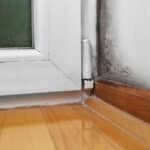Disclose Known Issues
One way to mitigate the impact of a bad inspection report is to disclose known issues to the buyer upfront. If you’re aware of any issues with your home, it’s better to disclose them before the inspection report comes back. By being transparent about any known issues, you can reduce the likelihood of surprises and minimize the impact of a negative inspection report. If you’re unsure of what should be disclosed, speak to a professional who can give you advice on what needs to be discussed with the buyer. If there are any issues that have already been addressed or fixed, this should also be noted in your disclosure statement. By providing full transparency about the condition of your home and any known issues, buyers will be better equipped to make an informed decision.
Make Maintenance a Regular Habit
Regular maintenance is crucial to keeping your home in good condition and avoiding a bad inspection report. Without regular maintenance, even the most well-built home can break down. By making maintenance a regular habit, you can catch small issues before they become big problems, and ensure that your home is in good condition when it’s time for an inspection. Start by creating a maintenance checklist and scheduling regular inspections. This will help ensure that everything is in order and that nothing has been missed. Be sure to look for signs of wear and tear, such as cracks in the foundation or walls, faulty wiring, leaking pipes, and more. If you come across any issues, take action immediately to address them.
Get to Work on Repairs
If your inspection report comes back with negative findings, it’s important to get to work on repairs as soon as possible. Even small issues can add up and make a big impact on a potential buyer’s perception of your home. By addressing issues promptly, you can demonstrate that you’re committed to maintaining your home and ensuring that it’s in good condition. Reach out to trusted contractors and vendors for estimates, but make sure to get multiple quotes so that you can find the best price. Understand the scope of work needed and any potential risks associated with it before committing to repairs. Once you’ve gathered estimates and decided on a vendor, be sure to stay involved in the repair process. By getting to work on repairs promptly, you can show potential buyers that you’re serious about maintaining your home and that you’re willing to invest in ensuring that it’s in good condition.
Selling a home can be stressful, especially when an inspection report comes back with negative findings. Whether you’re preparing to sell your home now or in the future, taking these steps can help you avoid costly surprises and ensure that your home is in top condition.
Did Yo0u Enjoy Reading This Article? Here’s More to Read: Why You Shouldn’t DIY a Home Inspection






